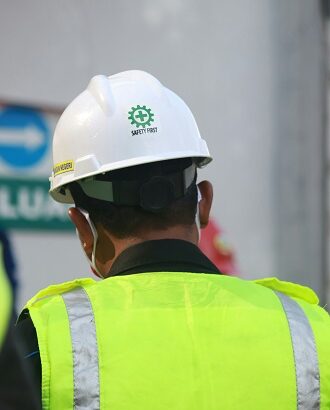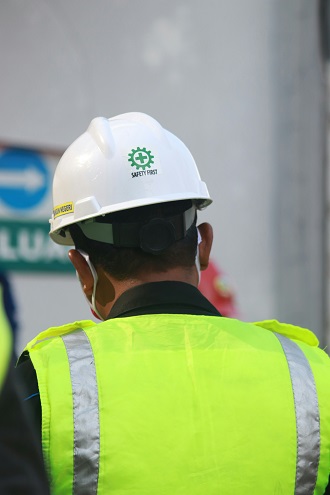Originally Published by Cole Publishing

Millions of motor vehicle accidents occur each year in the U.S. With so many drivers on the road every day and commercial insurance premiums and vehicle repair costs on the rise, organizations can’t afford to neglect driver and vehicle safety policies. Developing an effective fleet safety program lowers an organization’s risk level and protects company employees and assets.
John Brengosz, Loss Control Consultant for R & R Insurance, encourages organizations to take fleet safety seriously, because the consequences of a lackadaisical attitude can be deadly.
“Most people think the No. 1 way folks die at work is from falls,” he says. “It’s actually vehicle or driving-related fatalities.”
According to Brengosz, vehicles create the single largest risk exposure for a company, and personal injury lawyers complicate the issue.
“That’s part of the problem now with fleet safety. These commercials run all the time, and they’re encouraging people to make a claim if they’re involved in an auto accident,” he says.
Brengosz says he knows that developing and executing a fleet safety program takes time and personnel.
“The good news is, a lot of fleet safety programs don’t cost a lot of money,” he says.
Vehicle Policies
An effective fleet safety program focuses on three elements: vehicles, drivers, and policies governing them both.
If an organization provides vehicles, then it needs to set some standards. Brengosz asks clients these types of questions:
- Are you an organization that likes to run those vehicles forever and just try to keep them up?
- Do you have a replacement schedule?
- How much are they driven?
- How far are they driven?
- How much are they driven on personal time?
He advises clients to develop vehicle use, replacement, maintenance, and inspection policies. “Remember what could happen if you got a vehicle in an accident and it turns out we haven’t kept up at all with maintenance,” he says.
Organizations can establish frequency guidelines for routine service based on the vehicle manufacturer’s recommended mileage or engine hours. They can track maintenance themselves or have the service provider track it. In addition to routine maintenance, organizations also should conduct periodic vehicle inspections.
“How do we know what the vehicle’s condition is if we’re not formally looking at it?” Brengosz says. He recommends checking the oil and inspecting the headlights, taillights, tires, and the overall condition of the vehicle. Look for dents or scrapes, because drivers don’t necessarily fill out accident forms like they should. In Brengosz’s experience, vehicle inspections sometimes turn up surprises.
Behind the Wheel
The second element of fleet safety involves the drivers. Question to answer include: Who is allowed to operate the vehicle? If an employee takes the vehicle home, is anyone other than the employee allowed to drive the vehicle?
“Don’t toss the keys to just anybody,” Brengosz says.
He advised organizations to screen drivers at the time of hire by requesting their motor vehicle record from a governmental or private service. An MVR, also known as a driver’s abstract, reports a driver’s accidents and violations. Once they pull an MVR, the next step is to compare the record to the company’s formal policy and the standards of an acceptable driving record.
“When I hear somebody say, ‘We just eyeball an MVR and make a call on it,’ the problem with doing that is a human’s ability to rationalize,” Brengosz says. They might rationalize that their No. 1 sales person or best repair person should be allowed to drive, despite their bad driving record.
“How is it going to look at a trial if you pulled an MVR, it was poor, and you still allowed the employee to drive?” Brengosz says. “My big advice is, if you’re going to take the time and expense to run the MVRs, have a formal screening system that allows you to compare an MVR to your own policy and make the call.”
Organizations should screen all employees with a vehicle assigned to them, employees authorized to use a vehicle or operate a pool vehicle, and employee’s spouses who are allowed to drive a vehicle the employee takes home.
“Trust me when I tell you, I have had some cases where some of the spouse’s driving records are horrendous. If you’re not checking them, you wouldn’t catch that,” Brengosz says.
Fleet Safety Manual Keys
Three basic policies should be included in an effective fleet safety manual. The first is driver eligibility and MVR criteria. The second is a personal use policy. Is a driver allowed to use the vehicle for personal use? Out-of-state vacations? What family members are permitted to drive, and what screening do they need to complete? The third policy, a non-owned vehicle policy, refers to an employee’s use of a private vehicle or rental vehicle for company business.
“For starters, we need them to provide proof of adequate insurance coverage of their own,” Brengosz says. “It’s also a good idea for them to prove, at least once a year, that they have a valid driver’s license.”
To reinforce these policies and other components of a fleet safety program, Brengosz recommends annual training.
“It’s good to have an annual training on defensive driving and what our company rules are for maintenance and operating vehicles, so everybody’s aware of them,” he says. In a training session, organizations can reinforce safety rules regarding seat belt use, traffic laws, locking vehicles, distracted driving, and backing up a vehicle.
“Driving is very much a habit. We want them to form good habits,” Brengosz says.
Equipped for Accident Reporting
Post-accident reporting should be discussed at least annually.
“You don’t have to have a horrible, terrible crash to have lawsuits,” Brengosz says. Thus, every company vehicle should be equipped with an Accident Reporting Kit.
“It’s good to have something that the driver can fall back on to make sure they document the scene, get the names of witnesses, and just do a good job of having the insurance company handle the claim,” Brengosz says. Employees involved in an accident should take good notes and clear photos.
“Insurance company claims adjusters say, all the time, that the party that does the best job documenting the damage and what happened generally wins when it comes to these accidents,” Brengosz says.
To improve their fleet safety program, many organizations invest in GPS monitoring to track speed, location, idling time, and other details. They also mount HD cameras on the front and back to show what drivers see at the time of an accident.
“There are all sorts of really cool monitoring you can do,” Brengosz says. “If you’re going to pay for that service, be sure you’re using the data and talking to your drivers.”
An effective fleet safety program requires time and resources to develop and implement, but the results are worth it because of the rising costs of vehicle repairs, insurance premiums, and insurance claims. Protect your vehicles, employees, company assets, and reputation with a comprehensive fleet safety program.





